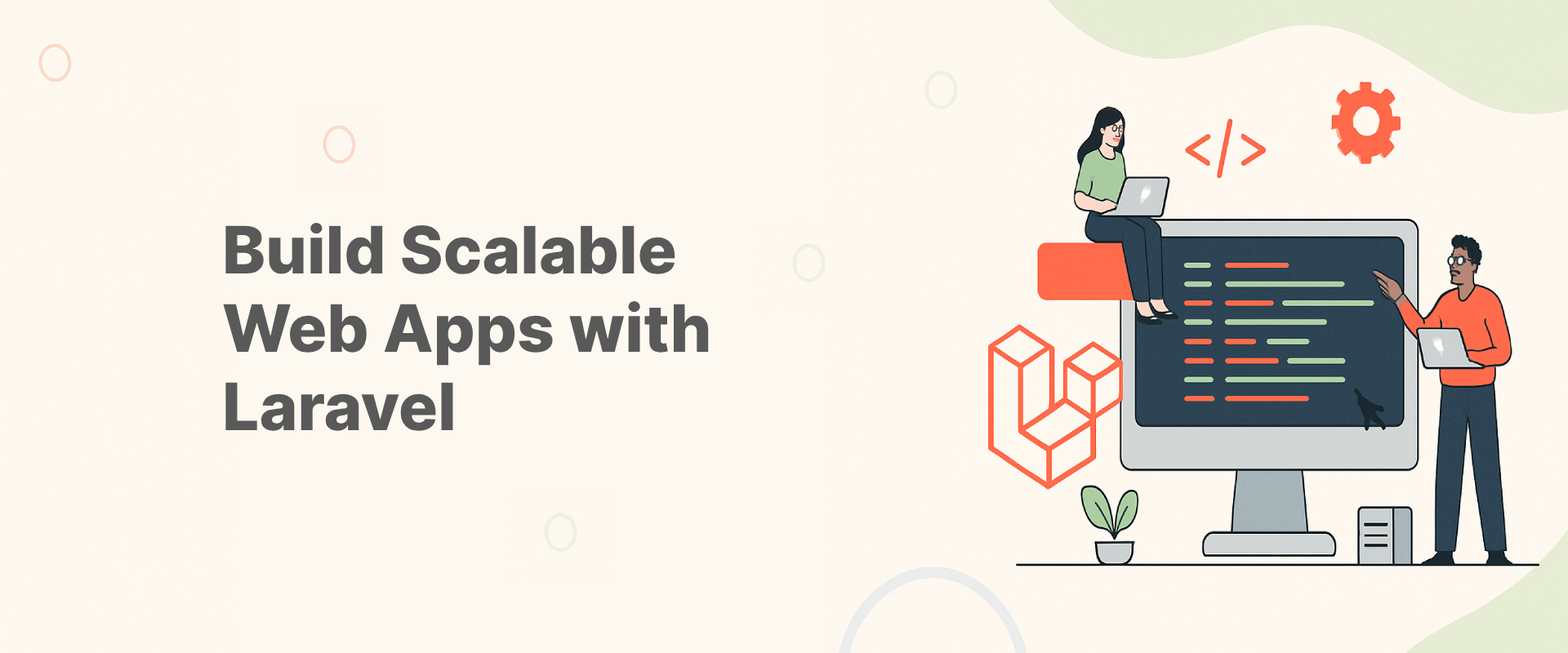How to Build Scalable Web Apps with Laravel

In a digital-first world, scaling your web app isn’t optional-it’s essential. Laravel empowers startups to build scalable web apps with high performance and less complexity.
Key Takeaways
- Discover why Laravel scalability is a major advantage for startups.
- Learn essential techniques for Laravel performance optimization.
- Understand best practices for Laravel API optimization.
- See real-world scaling strategies used by successful companies.
- Find out how Bytes Brothers can help you build a future-proof application.
Why Laravel is Built for Scalability
Laravel’s design philosophy favors modular, maintainable, and testable codebases-key factors for scaling.
Laravel scalability shines because of:
- Queue systems (powered by Redis, SQS).
- Horizontally scalable database architecture.
- Built-in cache drivers (Memcached, Redis).
- Microservices-friendly API structures.
- Seamless deployment with Laravel Forge, Envoyer, and Vapor (serverless).
Example: A SaaS startup handling high traffic events (like Black Friday sales) used Laravel Horizon to manage Redis queues, scaling their event-driven system without a single downtime.
Key Techniques for Building Scalable Laravel Applications
1. Optimize Database Performance
- Use indexing smartly.
- Break monolith databases into micro-databases as you grow.
- Leverage database read replicas for scaling reads.
2. Implement Laravel Queues
- Offload time-consuming tasks (like email sending, report generation) into background jobs.
php artisan queue:work redis
Pair it with Laravel Horizon for real-time monitoring and job prioritization.
3. Laravel API Optimization
If your web app has a heavy API layer, Laravel API optimization becomes critical:
- Minimize payloads by using Resource classes.
- Implement pagination on large data responses.
- Cache frequent API responses.
Cache::remember('api_products', 3600, function () {
return Product::all();
});
This reduces database pressure and improves response times dramatically.
Laravel Performance Optimization Best Practices
When talking about Laravel performance optimization, these are non-negotiable:
- Enable Opcode Caching (via OPcache).
Optimize Composer autoloading:
composer install --optimize-autoloader --no-dev
- Use Laravel’s Eager Loading (with()) to minimize N+1 query problems.
- Implement Content Delivery Networks (CDNs) for static assets.
- Adopt serverless deployment with Laravel Vapor if anticipating unpredictable traffic spikes.
Real-World Scaling with Laravel
Microservices and API-First Strategy
Many modern startups split their app into smaller, independently deployable microservices. Laravel’s lightweight HTTP client and API Resource layer make it easier to architect these systems from day one.
Example:
A fintech startup adopted an API-first architecture with Laravel backend services communicating with multiple frontend apps. By doing so, they achieved better load balancing and faster scaling under user surges.
Why Partner with Bytes Brothers for Your Laravel Project?
At Bytes Brothers, we specialize in building high-performance, scalable web applications using Laravel. Our team focuses on:
- Efficient architecture for growth-ready apps.
- Smart database and API optimizations.
- Scalable cloud deployments (AWS, Azure, DigitalOcean, Vapor).
Future-proof your web application with expert Laravel development!